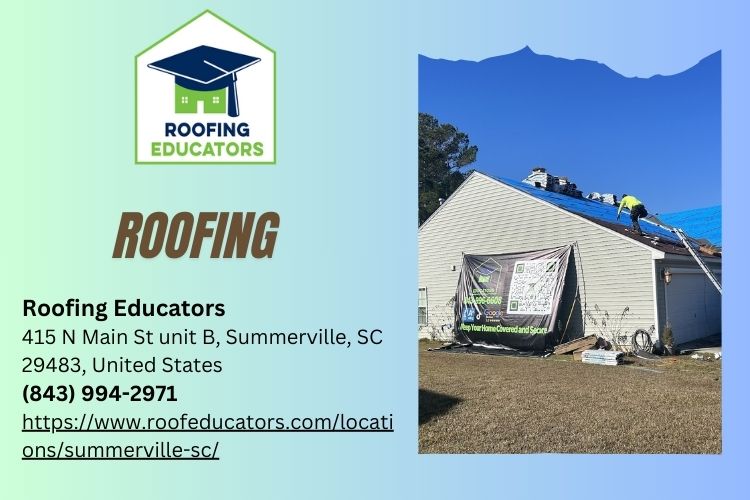Introduction
When it comes to maintaining a home, many homeowners often overlook one critical aspect: roof ventilation. While the idea of ventilation might conjure images of fresh air breezing through your living space, its significance in roof installations is paramount. Poor ventilation can lead to a myriad of issues that not only compromise the integrity of your roof but also affect your overall living environment. In this article, we will explore The Impact of Poor Ventilation on Roof Installations and What You Can Do About It. We’ll tackle everything from understanding how ventilation works to practical solutions for poor ventilation problems.
Understanding Roof Ventilation
What Is Roof Ventilation?
Roof ventilation refers to the process of allowing fresh air to circulate through the attic space in your home. This circulation helps regulate temperature and moisture levels, ensuring that your roofing materials perform optimally over time.
" width="560" height="315" frameborder="0" allowfullscreen>
Why Is Roof Ventilation Important?
Effective roof ventilation is crucial for several reasons:
- Temperature Control: Proper ventilation keeps your attic cool in the summer and prevents overheating. Moisture Management: It reduces humidity levels in the attic, preventing condensation that can lead to mold growth. Longevity of Roofing Materials: Adequate airflow prolongs the lifespan of shingles and other roofing materials by minimizing wear and tear.
The Impact of Poor Ventilation on Roof Installations
How Does Poor Ventilation Affect Your Roof?
Poor ventilation can have severe repercussions on your roof installation. Here are some key impacts:
1. Increased Moisture Levels
Excess moisture can lead to rot in wooden structures, weakening the framework of your roof.
" width="560" height="315" frameborder="0" allowfullscreen>
2. Mold Growth
High humidity levels create ideal conditions for mold and mildew, which can spread throughout your home.
3. Heat Accumulation
Trapped heat can cause shingles to deteriorate more quickly, leading to premature replacement needs.

4. Ice Dams Formation
In colder climates, poor ventilation can lead to ice dam formation, causing water backup under shingles that leads to leaks.
5. Decreased Energy Efficiency
Inefficient roofs require more energy for heating and cooling, raising utility bills significantly.
Signs of Poor Roof Ventilation
How Can You Identify Poorly Ventilated Roofs?
Identifying poor roof ventilation may save you from costly repairs down the road. Check for these signs:
- Stuffy or humid attic space Mold or mildew growth Icicles forming on eaves Warped or peeling shingles Increased energy bills
Solutions for Improving Roof Ventilation
What Can You Do About Poor Ventilation?
If you've noticed any signs of poor ventilation, here are steps you can take:

1. Install Ridge Vents
Ridge vents allow hot air to escape while drawing in cooler air from soffit vents at the eaves.
2. Use Soffit Vents
These vents help bring fresh air into the attic while allowing warm air to exit through ridge vents.
3. Consider Gable Vents
Gable vents provide cross-ventilation by utilizing natural wind currents.
4. Install Power Vents
Electric-powered ventilators actively remove hot air from attics but require electricity to operate effectively.
Types of Roof Vents
What Are the Different Types of Roof Vents?
Understanding different types of roof vents can help you make informed decisions about improving your roof’s ventilation:
| Type | Description | Pros | Cons | |--------------------|---------------------------------------|----------------------------------|------------------------------------| | Ridge Vents | Installed along the peak | Discreet; effective airflow | May need soffit vents | | Soffit Vents | Located under eaves | Inexpensive; easy installation | Requires balance with exhaust | | Gable Vents | Positioned on gables | Good for cross-ventilation | Less effective without additional vents | | Power Vents | Mechanically operated | Actively removes hot air | Higher energy costs |
Local Considerations for Roof Installation in Summerville SC
How Does Climate Affect Your Roofing Needs?
In Summerville SC's humid subtropical climate, proper attic ventilation becomes even more critical due to high humidity levels and seasonal temperature fluctuations.
Roof Installation Summerville: Local Expertise Matters!
When searching for “roof installation near me” or “local roof installation,” consider choosing professionals who understand local weather patterns and building codes related to roofing installations.
Hiring Professionals for Your Roofing Needs
Why Should You Consult Roofing Educators?
Engaging knowledgeable roofing professionals like Roofing Educators ensures quality work that adheres to best practices regarding roof installation and ventilation systems.
Contact Us
Roofing Educators
Address: 415 N Main St unit B, Summerville, SC 29483, United States
Phone: (843) 994-2971
DIY Solutions vs Professional Help: What Should You Choose?
Is DIY an Option for Improving Ventilation?
While some homeowners may opt for roof inspection DIY solutions such as installing vents themselves, it's essential to weigh potential risks versus benefits. Improper installations can exacerbate existing issues instead of resolving them.
FAQ Section
1. What are common signs my roof is poorly ventilated?
You may notice excess moisture accumulation in your attic or find icicles forming during winter months as indicators.
2. How much does it cost to improve my roof’s ventilation?
Costs vary based on chosen methods but range generally from $150-$600 depending on complexity and type of vent systems installed.
3. Can I install attic fans myself?
Yes, but ensure you follow safety guidelines; incorrect installation could worsen existing problems instead of helping them!
4. Why does my house feel humid even with AC running?
This could result from inadequate airflow in your home due primarily to inefficient attic venting systems causing trapped heat/humidity!
5. How often should I check my attic for proper airflow?
It’s wise checking every spring/fall season before extreme weather occurs; this way you’re prepared ahead!
6. Will improving my roof's venting lower my energy bills?
Absolutely! By enhancing airflow efficiency throughout warmer months (like Summer), less strain placed upon HVAC units results in decreased consumption thus lowering costs monthly!
Conclusion
In summary, understanding The Impact of Poor Ventilation on Roof Installations and What You Can Do About It is essential for every homeowner looking to protect their investment while ensuring a comfortable living environment year-round. Whether you choose DIY approaches or opt for professional assistance through established service providers like Roofing Educators located conveniently within Summerville SC area—taking steps towards better roofing practices will ultimately pay off greatly over time! Don't wait until problems arise; act now!